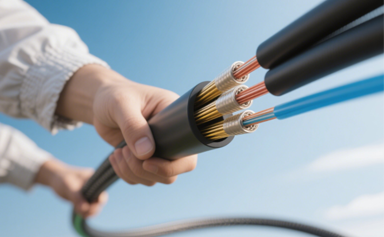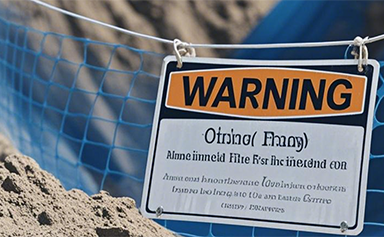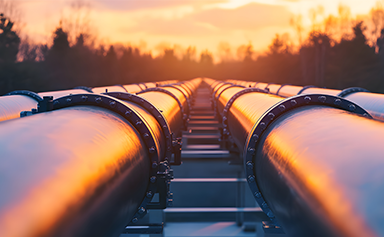Laying a natural gas pipeline is a complex project that involves multiple links such as design, construction, monitoring and maintenance. The following is a complete solution for laying a natural gas pipeline, covering the entire process from planning to operation:
1. Design and Planning
(1) Pipeline route design
Geographic Information System (GIS): Use GIS technology to analyze terrain, geology and environmental factors to optimize the route of the pipeline.
Environmental impact assessment: Assess the impact of construction on the ecological environment and formulate mitigation measures.
Social impact assessment: Consider the impact of construction on the local community to ensure the smooth progress of the project.
(2) Hydraulic and thermal calculation
Pipeline diameter design: Calculate the appropriate pipe diameter based on gas transmission volume and pressure requirements.
Pressure and flow analysis: Ensure that the pipeline system can meet peak demand.
Thermal calculation: Consider the impact of temperature changes on pipeline materials to prevent thermal expansion and contraction problems.
(3) Material selection
Steel pipe: Suitable for high-pressure and large-diameter pipelines, with high strength and high pressure resistance.
Polyethylene (PE) pipe: suitable for medium and low pressure pipelines, with the advantages of corrosion resistance and easy installation.
Composite materials: used in special environments, such as highly corrosive or high temperature areas.
2. Construction technology
(1) Excavation technology
Traditional excavation: suitable for open areas, with low construction costs.
Mechanized excavation: using equipment such as excavators and bulldozers to improve efficiency.
(2) Trenchless technology
Directional drilling: suitable for crossing obstacles such as rivers and roads.
Pipe jacking: suitable for urban areas, reducing the impact on ground traffic.
Horizontal directional drilling (HDD): used for long-distance and complex terrain pipeline laying.
(3) Welding and connection
Arc welding: suitable for welding steel pipes to ensure strength and sealing.
Hot melt welding: suitable for connecting PE pipes, simple operation and high reliability.
Mechanical connection: used for quick installation and maintenance.
(4) Quality control
Non-destructive testing: Use ultrasonic, X-ray and other technologies to detect welding quality.
Pressure testing: Perform water or air pressure testing on the pipeline system to ensure that there is no leakage.
3. Safety and environmental protection
(1) Leak detection
Fiber optic sensing: Monitor pipeline temperature, strain and vibration to detect leaks in a timely manner.
Infrared imaging: Detect gas leak points, suitable for long-distance pipelines.
Acoustic detection: Identify leaks by analyzing the acoustic wave signals in the pipeline.
(2) Environmental protection
Soil remediation: Restore soil structure after construction to prevent soil erosion.
Vegetation restoration: Replant vegetation in the construction area to restore the ecological environment.
Waste management: Properly handle waste generated by construction to reduce environmental pollution.
(3) Emergency plan
Leakage emergency: Develop a rapid response plan, including isolation, repair and evacuation measures.
Fire emergency: Equip firefighting equipment and personnel to ensure that fires can be put out in time.
Training and drills: Conduct emergency drills regularly to improve the team's response capabilities.
4. Intelligent management
(1) SCADA system
Real-time monitoring: Monitor pipeline pressure, flow and temperature through the SCADA system.
Remote control: Realize remote operation of pump stations and valves to improve management efficiency.
(2) Intelligent sensors
Pressure sensor: Real-time monitoring of pipeline pressure changes.
Temperature sensor: Detect pipeline temperature to prevent overheating or overcooling.
Flow meter: Accurately measure natural gas flow and optimize gas transmission efficiency.
(3) Data analysis
Fault prediction: Use big data and artificial intelligence to predict potential faults and perform maintenance in advance.
Optimize operations: Optimize gas transmission plans through data analysis to reduce operating costs.
5. Maintenance and repair
(1) Regular inspection
CCTV inspection: Use cameras to check the internal condition of the pipeline.
UAV inspection: Used for surface inspection of long-distance pipelines.
Manual inspection: Regularly send personnel to check key nodes.
(2) Repair technology
Inner lining repair: Install lining inside the pipeline to repair corrosion or damage.
Composite material repair: Use composite materials to wrap the pipeline to enhance strength and corrosion resistance.
Partial replacement: Replace damaged pipe sections to restore pipeline function.
(3) Cleaning and dredging
High-pressure water jet: Remove sediment and blockages in the pipeline.
Mechanical dredging: Use pigs to clean the inside of the pipeline.
6. Project management
(1) Schedule management
Gantt chart: Develop a detailed construction plan to ensure timely completion.
Milestones: Set key milestones to monitor project progress.
(2) Cost Control
Budget Preparation: Prepare a detailed budget plan.
Cost Analysis: Analyze costs regularly to prevent overspending.
(3) Risk Management
Risk Identification: Identify potential risks in construction.
Response: Develop a risk response plan to ensure the smooth progress of the project.
7. Regulations and Standards
Compliance: Ensure that the design, construction and operation comply with national and industry standards.
Certification and Licensing: Obtain necessary construction and operation licenses.
8. Training and Technical Support
Staff Training: Provide operation and maintenance training to improve team skills.
Technical Support: Provide technical support in design, construction and maintenance.
1. Design and Planning
(1) Pipeline route design
Geographic Information System (GIS): Use GIS technology to analyze terrain, geology and environmental factors to optimize the route of the pipeline.
Environmental impact assessment: Assess the impact of construction on the ecological environment and formulate mitigation measures.
Social impact assessment: Consider the impact of construction on the local community to ensure the smooth progress of the project.
(2) Hydraulic and thermal calculation
Pipeline diameter design: Calculate the appropriate pipe diameter based on gas transmission volume and pressure requirements.
Pressure and flow analysis: Ensure that the pipeline system can meet peak demand.
Thermal calculation: Consider the impact of temperature changes on pipeline materials to prevent thermal expansion and contraction problems.
(3) Material selection
Steel pipe: Suitable for high-pressure and large-diameter pipelines, with high strength and high pressure resistance.
Polyethylene (PE) pipe: suitable for medium and low pressure pipelines, with the advantages of corrosion resistance and easy installation.
Composite materials: used in special environments, such as highly corrosive or high temperature areas.
2. Construction technology
(1) Excavation technology
Traditional excavation: suitable for open areas, with low construction costs.
Mechanized excavation: using equipment such as excavators and bulldozers to improve efficiency.
(2) Trenchless technology
Directional drilling: suitable for crossing obstacles such as rivers and roads.
Pipe jacking: suitable for urban areas, reducing the impact on ground traffic.
Horizontal directional drilling (HDD): used for long-distance and complex terrain pipeline laying.
(3) Welding and connection
Arc welding: suitable for welding steel pipes to ensure strength and sealing.
Hot melt welding: suitable for connecting PE pipes, simple operation and high reliability.
Mechanical connection: used for quick installation and maintenance.
(4) Quality control
Non-destructive testing: Use ultrasonic, X-ray and other technologies to detect welding quality.
Pressure testing: Perform water or air pressure testing on the pipeline system to ensure that there is no leakage.
3. Safety and environmental protection
(1) Leak detection
Fiber optic sensing: Monitor pipeline temperature, strain and vibration to detect leaks in a timely manner.
Infrared imaging: Detect gas leak points, suitable for long-distance pipelines.
Acoustic detection: Identify leaks by analyzing the acoustic wave signals in the pipeline.
(2) Environmental protection
Soil remediation: Restore soil structure after construction to prevent soil erosion.
Vegetation restoration: Replant vegetation in the construction area to restore the ecological environment.
Waste management: Properly handle waste generated by construction to reduce environmental pollution.
(3) Emergency plan
Leakage emergency: Develop a rapid response plan, including isolation, repair and evacuation measures.
Fire emergency: Equip firefighting equipment and personnel to ensure that fires can be put out in time.
Training and drills: Conduct emergency drills regularly to improve the team's response capabilities.
4. Intelligent management
(1) SCADA system
Real-time monitoring: Monitor pipeline pressure, flow and temperature through the SCADA system.
Remote control: Realize remote operation of pump stations and valves to improve management efficiency.
(2) Intelligent sensors
Pressure sensor: Real-time monitoring of pipeline pressure changes.
Temperature sensor: Detect pipeline temperature to prevent overheating or overcooling.
Flow meter: Accurately measure natural gas flow and optimize gas transmission efficiency.
(3) Data analysis
Fault prediction: Use big data and artificial intelligence to predict potential faults and perform maintenance in advance.
Optimize operations: Optimize gas transmission plans through data analysis to reduce operating costs.
5. Maintenance and repair
(1) Regular inspection
CCTV inspection: Use cameras to check the internal condition of the pipeline.
UAV inspection: Used for surface inspection of long-distance pipelines.
Manual inspection: Regularly send personnel to check key nodes.
(2) Repair technology
Inner lining repair: Install lining inside the pipeline to repair corrosion or damage.
Composite material repair: Use composite materials to wrap the pipeline to enhance strength and corrosion resistance.
Partial replacement: Replace damaged pipe sections to restore pipeline function.
(3) Cleaning and dredging
High-pressure water jet: Remove sediment and blockages in the pipeline.
Mechanical dredging: Use pigs to clean the inside of the pipeline.
6. Project management
(1) Schedule management
Gantt chart: Develop a detailed construction plan to ensure timely completion.
Milestones: Set key milestones to monitor project progress.
(2) Cost Control
Budget Preparation: Prepare a detailed budget plan.
Cost Analysis: Analyze costs regularly to prevent overspending.
(3) Risk Management
Risk Identification: Identify potential risks in construction.
Response: Develop a risk response plan to ensure the smooth progress of the project.
7. Regulations and Standards
Compliance: Ensure that the design, construction and operation comply with national and industry standards.
Certification and Licensing: Obtain necessary construction and operation licenses.
8. Training and Technical Support
Staff Training: Provide operation and maintenance training to improve team skills.
Technical Support: Provide technical support in design, construction and maintenance.
Through the above solutions, natural gas pipeline laying projects can achieve efficient, safe and sustainable operations while meeting environmental protection and regulatory requirements.









